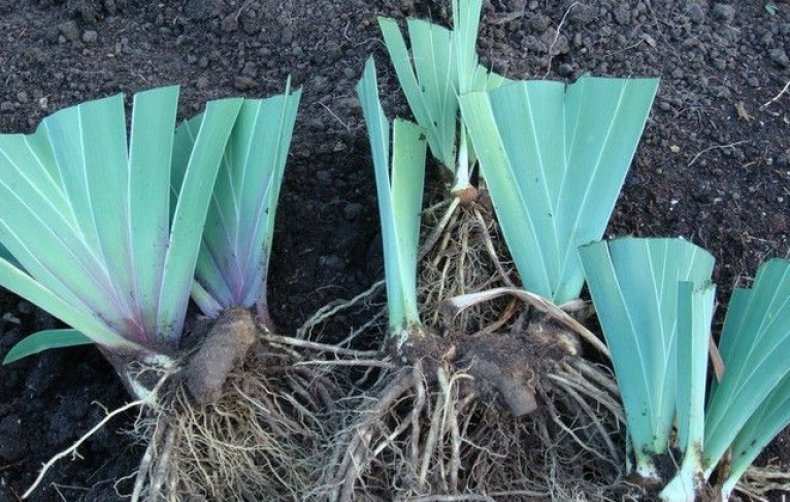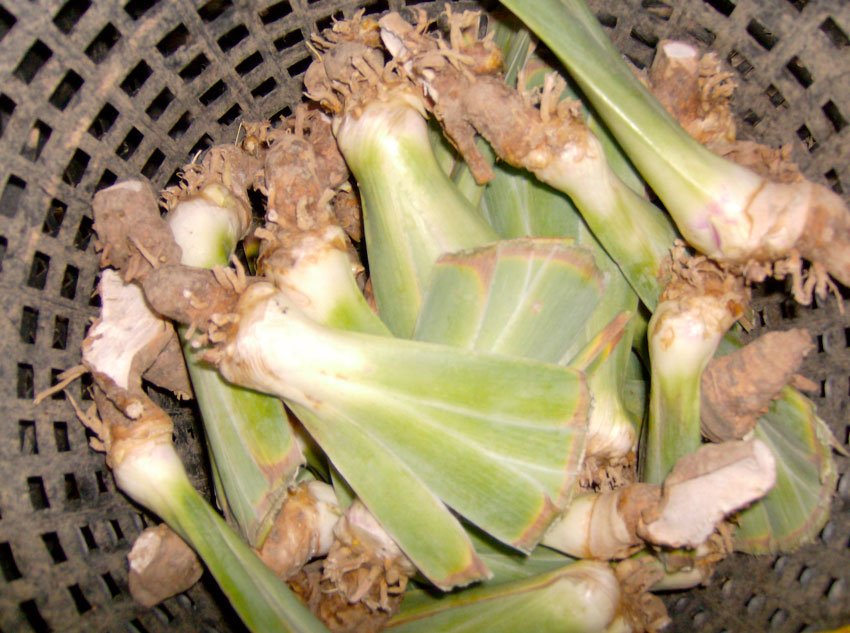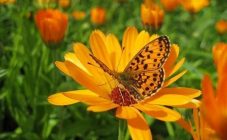Content:
- Irises: planting and care in the open field and at home
- Planting flowers
- Storage of planting material
- Rules for planting iris seeds in open ground
- Protection against diseases and pests
- Weed control
- Features of planting and caring for iris in the Moscow region and Siberia
- How to grow iris from seeds at home
Iris is a perennial plant of the Iris family. The culture has been known in floriculture for more than 2 thousand years, there are about seven hundred species. Flowers can be single and in inflorescences, bearded and beardless. Large, sometimes fragrant buds in structure resemble orchid flowers. Flowering continues from mid-May to late July. The freshness of the bud lasts up to five days. To preserve the neat appearance of the plant, dried buds should be removed. Before planting this spectacular flower, you need to figure out how to grow irises.
Some members of the family reproduce by dividing the rhizomes, and some by bulbs. Both have the option of seed breeding.
Translated from Latin "iris" means "rainbow". In fact, the variety of types and colors of petals is so great that even a rainbow can envy.
The growing area of the culture is extensive. There are varieties that have taken root well even in the northern hemisphere. Despite the rather harsh climatic conditions, a large number of species are grown in the territories of the Black Earth Region, the Urals and the Moscow Region. Rhizome varieties feel especially good.
Irises: planting and care in the open field and at home
For strong and beautiful irises to grow, cultivation must be carried out in accordance with all the rules of agricultural technology. The peculiarity of the root system of the culture is that it is located very close to the surface of the earth and, expanding, even protrude above it. If you don't know about it, you can easily lose the plant, because the roots will freeze in winter. Hence, the first rule - in the fall, the roots must be sprinkled abundantly with soil (a mixture of garden soil and peat in equal proportions is suitable).
The second feature of culture is that it knows how to move. To prevent this from happening, you should plant plants in a row with a fan of leaves along. Then the movements will occur within the row.
Landing nuances
The next important rule is the preparation of the landing pit. There should be sand at its bottom, roots are straightened on a sandy hill and sprinkled with fertile soil on top.
The exception is beardless species. On the contrary, they need to be buried and sprinkled with mulch to retain moisture. For this, needles or dry foliage are suitable. Further cultivation and care of irises in the open field consists in regular watering, fertilization and preparation for winter.
Top dressing and transplanting
Culture does not tolerate organics. Liquid mineral fertilizers such as Kemira-universal are suitable for fertilization (you can use ammophoska, urea).
Most crop varieties need replanting every 3-4 years. Otherwise, they may degenerate. This is especially true for hybrids.
There are no problems with a transplant. The procedure can be performed in spring, summer and autumn.
For irises, the morning sun and the absence of drafts are important.Swamp and Siberian varieties prefer wetlands, while others require drainage to avoid root rot.
The soil
All of them require fertile soil, well diluted with humus and fertilized with phosphorus-potassium supplements. Acidic soil should be neutralized with chalk or dolomite flour.
Planting flowers
In spring, irises are planted in the country from mid-April to early May. Planting material should be inspected for rot. Cut off the dried roots, disinfect the sections with potassium permanganate and hold them in a root formation stimulator (Ekogel, Epin).
Autumn planting is carried out in September. To do this, the bush is dug with a pitchfork, shaken off the ground and divided into links with leaves. Each section is treated with a manganese solution and dried for several hours in the sun.
Depending on the size of the future bush, the distance between the plants ranges from 15 to 50 cm.
Bulbous blooms two months a year - in May and June. Immediately after the last buds fall off, the bulbs are dug out, treated with manganese and dried. At the end of September, they are planted in the ground and are well covered (with dry foliage, needles, straw, spruce branches).
Storage of planting material
For storage, planting material is laid in a dried form. For better storage, each spine is wrapped in paper and folded into a cardboard or wooden box. The optimum temperature for preservation will be about 0 degrees. Such a place can be considered an insulated shed, basement, insulated loggia.
There is another way to preserve the plant - planting the root in a pot in the fall, until spring it must be kept in a cool room (0 ... + 2 degrees). By spring, the root will sprout and it will be possible to plant it on the site. If you put the flowerpot on a light windowsill, water and fertilize, you get an iris - a home flower.
Rules for planting iris seeds in open ground
The plant reproduces by seeds quite simply. You can sow them directly on the ground, or you can grow seedlings at home.
Detailed description, diagram
When sowing in autumn, in September, seeds are sown in furrows up to 2 cm deep, sealed, watered and covered with non-woven breathable material. In regions with harsh winters, autumn planting may not survive, so it is best to sow seeds in the spring when the weather is stable (May).
Preparing the garden
The next most important thing when sowing iris is the preparation of the garden. If adult plants do not like organic matter, then a manure pillow is just right for sowing seeds. Only this layer needs to be buried deep, at least 20 cm deep. It does not hurt to add a little urea or ammophos. The top layer will be a mixture of garden soil, sand and peat in approximately the same proportion.
The finished bed is drawn in rows with an interval of 10 cm.Further, the sowing itself with sunken seeds by 1.5-2 cm.
Autumn plantings will need to be covered for the winter, and spring ones will grow in the same place and by next spring they will become full-fledged flowering plants.
Further care of the plantings consists in regular watering. Overdrying the soil is best avoided. Especially during the period of bud formation.
Top dressing
Fertilization is also required. Top dressing is carried out three times per season.
The first feeding is in early spring (nitrogen, phosphorus and potassium in a ratio of 2: 1: 1), the second is before flowering (nitrogen, phosphorus, potassium in a ratio of 3: 1: 3), and the third is in late autumn (1: 1 - phosphorus + potassium).
Protection against diseases and pests
The culture needs protection from pests (thrips) and diseases (root rot). In order to avoid lesions, twice a month it is worth treating the plantings with insecticides, for example, Actellikt or Fitoverm, and from rot - Hom. For the latter, the root is taken from the ground, cleaned of rot and treated with the drug. After drying (at least 12 hours), the root can be planted back.
Weed control
There are particularities in weed control. Due to the superficial location of the roots, mechanical tools cannot be used. All weeding is done by hand.
Especially delicate varieties (such as Dutch, Japanese) need additional shelter for the winter.
Features of planting and caring for iris in the Moscow region and Siberia
The climate of the Moscow region and Siberia is famous for return frosts in spring. Therefore, it is especially important to sprinkle the protruding roots of irises with soil before winter. The layer of mulch (peat, humus, rotted foliage, dry needles, sand) should be at least 15-20 cm. It will not be superfluous to put spruce branches on top. This will protect the roots from rodents.
How to grow iris from seeds at home
To get irises from seeds, cultivation is possible at home. This requires:
- soil (a mixture of earth and sand in equal proportions);
- pot - any dish with drainage holes;
- drainage material (expanded clay, pebbles);
- film or glass;
- seeds.
Seeds should be checked for viability before planting. This is especially true of the question of how to grow iris from seeds at home from China: such material may be completely unsuitable. This can be checked by immersing them in water: empty seeds will float.
You can sow seeds from November to January. Then by the spring good seedlings will already grow. Before emergence, the film does not need to be removed. The soil should always be moist. Crockery should be placed in a warm place.
Iris is one of the few cultures that are unpretentious, but at the same time, royally beautiful. There are so many varieties that anyone will find to their liking. Having decided to start irises in the garden, even a beginner will figure out how to plant and care for them.
















